From balconies to town squares: Bella ciao is the hymn of social justice, a song of freedom, peace, hope and brotherhood. We have heard it sung in the squares of every country, in demonstrations for civil rights, against oppression and tyranny. We have even heard it sung from the balconies and windows of our cities when we had to close ourselves indoors, in a necessary and unexpected confinement. So let's resume the journey of this new Bella Ciao - which we've been carrying around Europe since 2014 - in a new version, with new songs and new arrangements, which points decidedly south: A sud di Bella Ciao.
A great popular fresco, the story of life and feelings of a people through a repertoire ranging from social and protest songs to love songs and dance, inspired by "Ci ragiono e canto" by Dario Fo in 1966. This album "A sud di Bella Ciao" is the natural sequel to the first"Bella Ciao," a successful 2014 project that toured the world with the restaging of the historic 1964 show. This time, as the title announces, the compass points decidedly toward southern Italy, with the rhythms of the tammurriata, of the round dance and of the pizzica, with the melodies daughters of Mediterranean influence, and with poetry, more lyrical in the love songs and more raw in the songs of revolt.
Riccardo Tesi (diatonic accordion, musical direction), Elena Ledda (voice), Lucilla Galeazzi (voice), Alessio Lega (voice, guitar), Nando Citarella (voice, tambourine, battente guitar, jews harp ), Maurizio Geri (voice, guitar), Gigi Biolcati (percussion, voice), Claudio Carboni (sax) guide the listener through a journey into the past that helps once again to understand and decipher our present.Thirteen songs that trace an ideal path that starts from the center of the “Belpaese”, crosses the south and arrives in Sardinia. We find tributes to popular singers such as Rosa Balistreri, Caterina Bueno, Matteo Salvatore but also to groups that have marked the birth of the southern folk revival: Nuova Compagnia di Canto Popolare, Eugenio Bennato and Musicanova, Canzoniere Grecanico Salentino and Officina Zoè.
A Mediterranean version of "Bella ciao", could not be missed, which in the disc appears as a bonus track which becomes a choral song with numerous guests (some of which we also find in other tracks): Francesco Loccisano beating guitar, Andrea Piccioni percussions and scacciapensieri, Mauro Durante violin, Christian Di Fiore, ciaramella, Mauro Palmas mandoloncello, Andrea Salvadori tzouras, Ginevra Di Marco voice, Peppe Voltarelli voice, Moni Ovadia voice, Mario Incudine voice. Musically, compared to the previous album, "A Sud di Bella Ciao" has been conceived as a more choral work, with more space for polyphony and vocal harmonies, more elaborate arrangements, new rhythms and new sounds with the inclusion of instruments such as the beating guitar, the tambourine, the tammorra and the scacciapensieri that take us to the South of Italy.
The repertoire is focused on the classics that have characterized the history of southern folk revival. As in the case of the first Bella Ciao, reinterpreting the classics is part of the DNA of this group composed of some of the most influential musicians of the Italian world scene of the last forty years. "A Sud di Bella Ciao" just wants to tell a story that combines magic with legend, where rituality awakens the peasant world, where sensuality mixes with fatigue.
THE ORIGINS
The show "Bella Ciao" of 2014 was born as a tribute, fifty years after its debut, to the homonymous project that in 1964, at the Festival of Two Worlds in Spoleto, decreed the birth of the Folk Revival in Italy. It was not, as many think, an exclusively political show, but a true and proper "fresco" of the popular world through moments of celebration, love, work, religious faith, protest, resistance. Its great strength was to show another history of Italy, a different way of understanding culture.
However, the show had a strong northern geographical connotation, since at the time research on folk songs - still in a pioneering phase - had not yet addressed the immense repertoire of the south. This was taken care of by Dario Fo, two years later with his "Ci ragiono e canto", with the Sicilian Rosa Balistrieri and the Sardinian choir Galletto di Gallura, which paved the way to a true renaissance of southern folk: Nuova Compagnia di Canto Popolare, Eugenio Bennato Musicanova, Maria Carta, Tenor of Orgosolo and Bitti are international successes; traditional or modern storytellers such as Cicciu Busacca and Otello Profazio, songwriters anchored to tradition as the pioneer Modugno, Matteo Salvatore, Enzo del Re. All the way up to the present years and the widespread diffusion of Salento's pizzica beginning with the historical Canzoniere Grecanico Salentino.
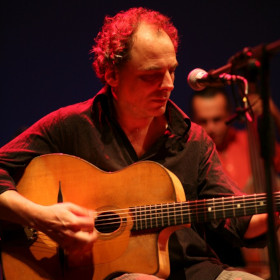 |
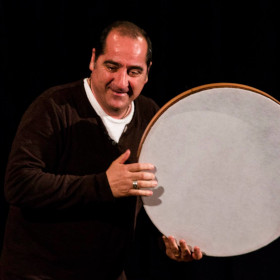 |
 |
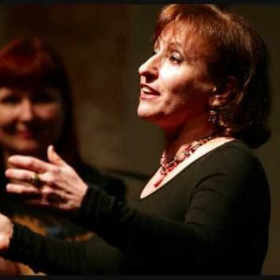 |
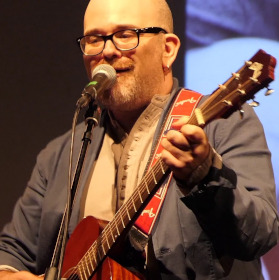 |
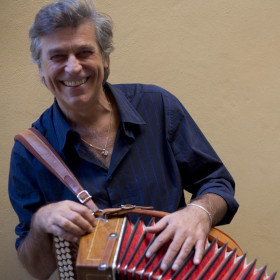 |
Photo Credits:
(1)-(2) A Sud Di Bella Ciao,
(3) Maurizio Geri,
(4) Nando Citarella,
(5) Elena Ledda,
(6) Lucilla Galeazzi,
(7) Alessio Lega,
(8) Riccardo Tesi
(unknown/website).